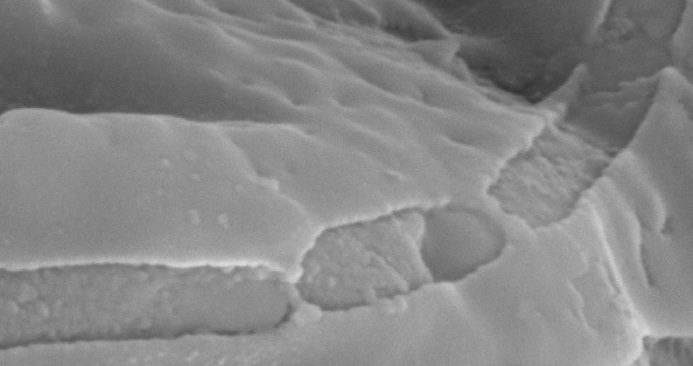3 billion-year-old fossils show early microbes lived in cavities

At this time, between 4 billion and 2.5 billion years ago, Earth was scorched by intense UV radiation, and had no ozone layer to protect it – a bit like Mars is today.
So life at the surface would have found survival a challenge.
Some of the oldest fossil cells are around 3.43 billion years old, and thought to have lived on sand grains that might have been covered by shallow water and overlying grains.
At the Barberton greenstone belt in South Africa, an area where ancient volcanic rock has been pushed to the surface, there are thin layers of rock thought to be 3.22 billion-year-old microbial mats – sheets of microbes that covered tidal areas of the seashore.
Now fossilised bacteria have been discovered underneath the mat in cavities covered by a thin layer of sediment. The bacteria are rod-shaped, growing end-to-end in long filaments like many bacteria do today.
Like modern microbes
“The shape is quite uniform,” says Alessandro Airo at the Free University of Berlin, Germany, who analysed the fossils. “It appears that by that time, they were already able to biochemically control diameter and length, and coordinate themselves into a chain. That’s what modern microbes do all the time.”
David Wacey, a palaeobiologist at the University of Bristol, UK, says the evidence from the new study looks robust.
“They have studied the geology in detail so we know that the environment was habitable for life, and the interpreted setting is closely comparable to where we would expect to find such structures today,” he says.
“The record of Archaean microfossils is sparse and controversial,” says Birger Rasmussen at Curtin University, Australia, who previously reported the discovery of cavity-dwelling microbes in 2.7 billion-year-old sediments in Australia. “This is an exciting find as it extends the record of possible life in this habitat a further 500 million years.”
The atmosphere and UV radiation during this period of Earth’s history are thought to have been similar to conditions on Mars. Airo says that understanding how life could have survived in this time could give us clues about what sort of life might be found on Mars and where to look.
“This study shows that very close to the surface, life was possible back then,” he says, “so it could well be that microbes thrived even on the surface of Mars and not necessarily only in deep water or the subsurface.”















































